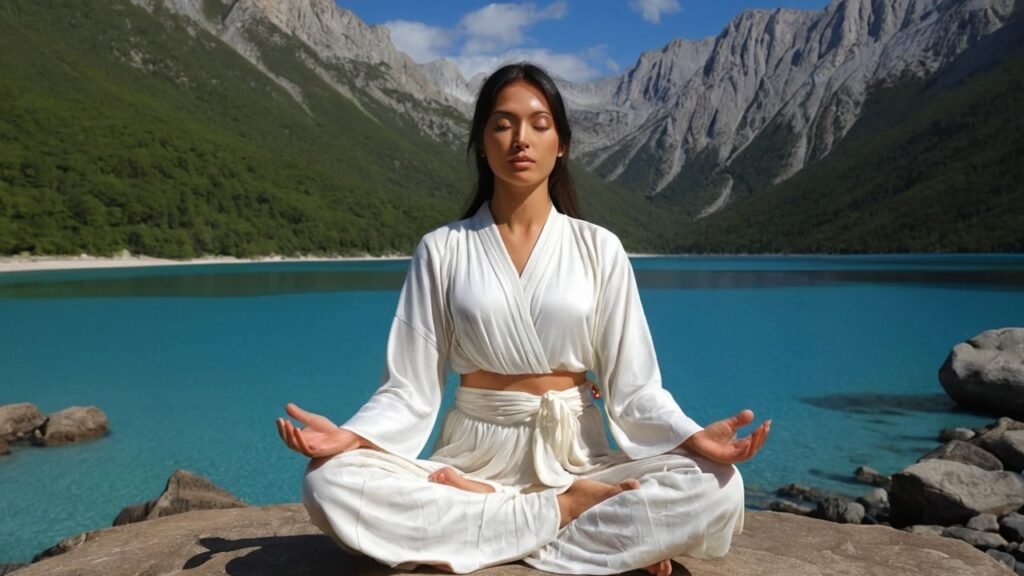The Path to Inner Peace: Secrets No One Told You

Inner peace is the holy grail of emotional well-being. Yet, it often feels elusive, like chasing a shadow.
What if the answers lie in practices and perspectives that most of us overlook?
This article reveals the untold secrets to achieving inner peace, guiding you step by step toward a calm and balanced state of mind.
- The Path to Inner Peace
- Why Does Inner Peace Seem So Hard to Find?
- 1. What Is Inner Peace, Really?
- 2. The Mind-Body Connection: Why It Matters
- 3. Letting Go: The Power of Forgiveness
- 4. Embracing the Present: Living in the Now
- 5. Cultivating Gratitude: A Secret Weapon
- 6. Nature as a Healing Force
- 7. Decluttering Your Mind: Simplify for Peace
- 8. Building Resilience: A Key to Sustainable Peace
- 9. Setting Boundaries: Protect Your Peace
- 10. The Role of Purpose in Inner Peace
- Conclusion: Your Journey to Inner Peace Starts Now
- FAQ
The Path to Inner Peace
The path to inner peace is not about avoiding life’s challenges but embracing them with grace and clarity.

In a fast-paced world, finding calm may seem impossible, but with the right practices and mindset shifts, tranquility is within reach.
Let’s explore how you can navigate this transformative journey and uncover the peace you’ve been searching for.
Why Does Inner Peace Seem So Hard to Find?
Imagine standing by a serene lake on a crisp morning. The water is calm, reflecting the surrounding trees and sky.
Now, compare that to the storm inside your mind on a stressful day. Which one feels more familiar?
For many of us, the turbulence of daily life overshadows the stillness we crave. According to a study published in the Journal of Happiness Studies, more than 60% of people report feeling stressed most days.
The good news?
Inner peace is not just for monks or yogis; it’s accessible to everyone. You just need to uncover the secrets that have been hiding in plain sight.
Let’s explore these secrets, one layer at a time.
1. What Is Inner Peace, Really?
At its core, inner peace is not about escaping life’s problems but responding to them with calm and clarity.

Inner Peace Isn’t the Absence of Struggle
Many believe that peace means eliminating challenges. In reality, inner peace is the ability to maintain tranquility amid life’s ups and downs.
Picture a tree standing firm in a storm, its roots keep it steady even as the wind howls.
Signs You’ve Found Inner Peace
Discover the powerful signs that reveal you’ve achieved true inner peace and harmony within yourself.
- You feel less reactive to negative situations.
- You sleep better at night, free from racing thoughts.
- Your relationships become more harmonious.
The first step is understanding that inner peace is not a destination, it’s a practice, woven into every decision and mindset shift.
2. The Mind-Body Connection: Why It Matters
The mind and body are inextricably linked. When your body is tense, your mind follows suit, and vice versa.
How Stress Affects Your Inner Peace
Chronic stress can wreak havoc on your body. Studies show that prolonged stress increases cortisol levels, leading to:
- Fatigue
- Weakened immune system
- Anxiety
Simple Practices to Reconnect with Your Body
- Breathing exercises: Deep, intentional breaths signal your brain to relax.
- Stretching or yoga: Releases physical tension, making mental relaxation easier.
- Mindful eating: Enjoy each bite slowly to ground yourself in the present moment.
When your body feels cared for, your mind naturally gravitates toward peace.
3. Letting Go: The Power of Forgiveness
Holding onto anger or resentment is like drinking poison and expecting the other person to suffer.
Why Forgiveness is a Game-Changer
Forgiveness isn’t about condoning someone’s actions; it’s about freeing yourself from emotional chains. Research by the Mayo Clinic shows that forgiving others can reduce anxiety, depression, and even blood pressure.
How to Practice Forgiveness
•Start with small grievances to build your “forgiveness muscle”.
•Write a letter (you don’t have to send it) expressing your feelings.
•Focus on the lessons learned rather than the pain endured.
The act of letting go creates space for peace to flourish.
4. Embracing the Present: Living in the Now
How often do you dwell on the past or worry about the future? These habits rob you of the present moment, the only place where peace exists.
Mindfulness as a Tool for Inner Peace
Mindfulness is the practice of being fully engaged in the here and now.
- Example: Instead of rushing through your morning coffee, savor its aroma and warmth.
- Proven Benefits: A 2019 study found that mindfulness reduces stress and enhances overall well-being.
Practical Tips to Stay Present
- Use sensory anchors like the sounds around you or the texture of an object in your hand.
- Set daily reminders to check in with yourself and your surroundings.
- Engage in activities like painting, gardening, or journaling that require full attention.
5. Cultivating Gratitude: A Secret Weapon
Gratitude transforms your perspective, shifting focus from what’s wrong to what’s right.
Why Gratitude Works
Grateful people experience less envy, better relationships, and greater emotional resilience. It’s like rewiring your brain to notice joy instead of disappointment.
How to Build a Gratitude Practice
- Keep a gratitude journal and write three things you’re thankful for every day.
- Verbally express appreciation to loved ones, it strengthens bonds and boosts happiness.
- Reflect on past challenges and how they’ve shaped your growth.
6. Nature as a Healing Force
Ever notice how a walk in the park can melt away stress? There’s a reason for that.
The Science Behind Nature and Inner Peace
Nature exposure reduces cortisol levels and activates your parasympathetic nervous system, the part of your brain responsible for relaxation.
Easy Ways to Connect with Nature
- Take your workout outdoors.
- Spend 10 minutes each day watching the sunrise or sunset.
- Bring plants into your home for a calming atmosphere.
Even brief moments in nature can recharge your inner battery.
7. Decluttering Your Mind: Simplify for Peace
Our minds are like closets, when too cluttered, it’s hard to find clarity.
The Role of Mental Decluttering
- Journaling: Offload your thoughts onto paper to untangle them.
- Meditation: A practice that helps you observe your thoughts without judgment.
- Digital detox: Reduce screen time to create mental space for peace.
Think of mental decluttering as a spring cleaning for your soul.
8. Building Resilience: A Key to Sustainable Peace
Resilience isn’t about avoiding difficulties; it’s about bouncing back stronger.
Traits of Resilient People
- They view challenges as opportunities for growth.
- They cultivate a support system of trusted friends and mentors.
- They maintain a positive outlook, even during tough times.
Building resilience ensures that peace doesn’t crumble when life gets hard.
9. Setting Boundaries: Protect Your Peace
Saying “no” is a complete sentence.
Why Boundaries Matter
Without them, you risk burnout, resentment, and emotional exhaustion.
- Example: Turn off work notifications after hours to preserve your mental health.
How to Set Healthy Boundaries
- Clearly communicate your limits.
- Stick to them even when faced with pushback.
- Practice self-care to reinforce your boundaries.
Remember, protecting your peace is not selfish; it’s necessary.
10. The Role of Purpose in Inner Peace
When you know your “why,” life’s challenges feel less daunting.
Finding Your Purpose
- Reflect on activities that make you lose track of time.
- Volunteer or try new hobbies to discover hidden passions.
- Create goals that align with your values.
A sense of purpose gives your inner peace a foundation.
Conclusion: Your Journey to Inner Peace Starts Now
Inner peace isn’t a distant dream, it’s a daily practice. Start small, whether it’s a minute of mindful breathing or a heartfelt moment of gratitude. Each step brings you closer to the calm and clarity you deserve.
So, which secret will you try today? Remember, the path to inner peace is yours to walk, one mindful moment at a time.
FAQ
1. What are the first steps to finding inner peace?
Start with small practices like mindful breathing, gratitude journaling, or taking walks in nature.
2. Can anyone achieve inner peace?
Yes, inner peace is accessible to everyone with consistent effort and self-reflection.
3. How does forgiveness contribute to inner peace?
Forgiveness releases emotional burdens, creating space for healing and tranquility.
4. Is meditation necessary for inner peace?
While not mandatory, meditation is a powerful tool to cultivate mindfulness and reduce stress.
5. Can inner peace coexist with a busy lifestyle?
Absolutely! Inner peace thrives on balance, not inactivity. Small, intentional habits can create calm even in chaos.
6. What’s the biggest obstacle to inner peace?
Overthinking and holding onto past regrets are common barriers. Letting go is key.



